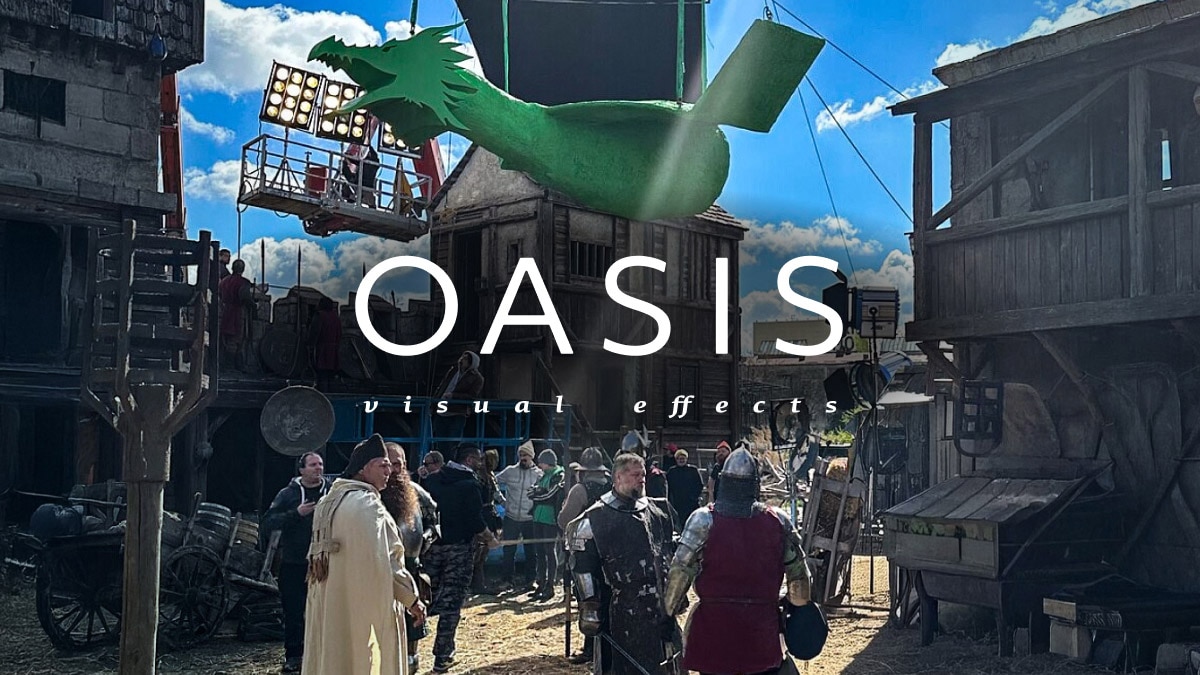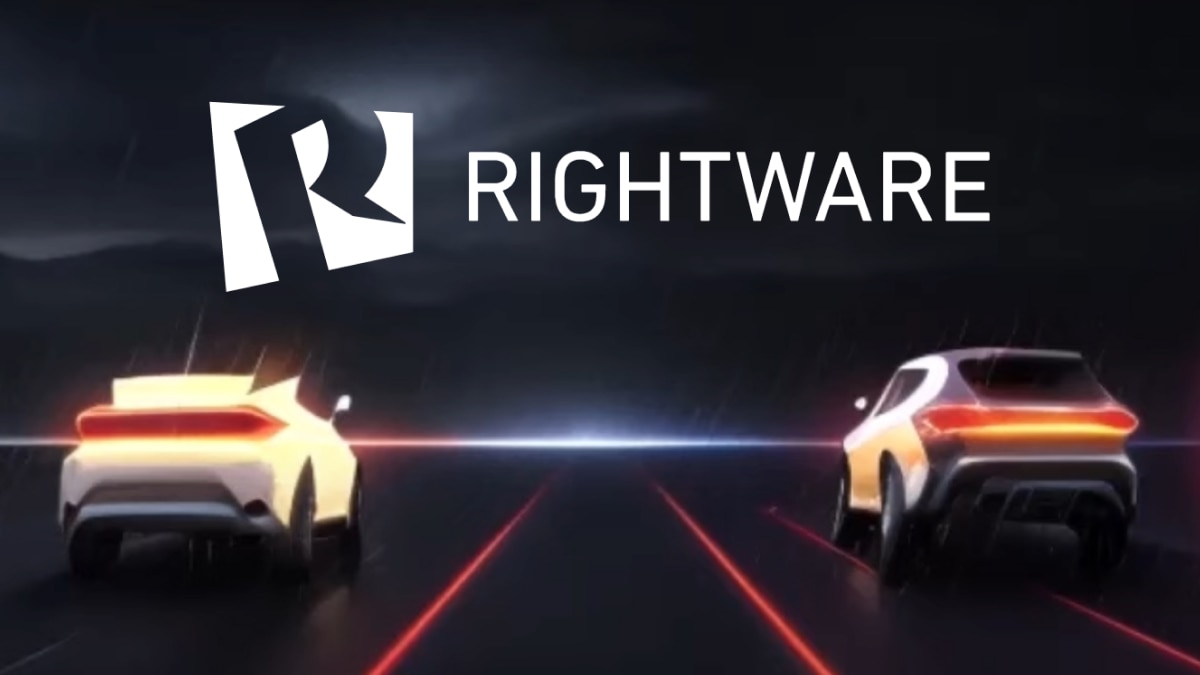IMSA delivers next-level motor racing experience with AMD
IMSA achieved the performance needed for real-time motorsport telemetry and dozens of video feeds using Lenovo servers and laptops powered by AMD CPUs and race data processed by AMD FPGAs
Sports are becoming increasingly augmented or advanced by technology innovation. Motorsports is on the cutting edge of this trend. Modern high-performance computing is integral to racing, delivering real-time vehicle and track updates to drivers, race control, and fans alike around the world. Today, there’s a correlation between the amount of compute performance an organization can deploy and attendees’ enjoyment of racing events. The International Motor Sports Association (IMSA) found that AMD EPYC™ and Ryzen™ processors delivered reliability, incredible performance, and efficiency, driving its racing and fan features toward the checkered flag.
“IMSA was founded in 1969 and has evolved into one of the major worldwide authorities for professional road racing,” says Mark Raffauf, Senior Director of Competition, IMSA. “We feature endurance races: 24 hours of Daytona, 12 hours of Sebring, 10 hours at Atlanta. We run eight programs: Three championship series for various categories of cars, and five series for specific car models and brands. We conduct approximately 20 weekend events a year in North America.”
In this very challenging environment, race management and fan engagement technology have changed a lot over the years. “Up until the early 1980s, we operated events solely with people stationed around the racetrack,” says Raffauf. “There was no video or imagery.” These “corner workers” would relay back information about racing incidents with two-way radios.
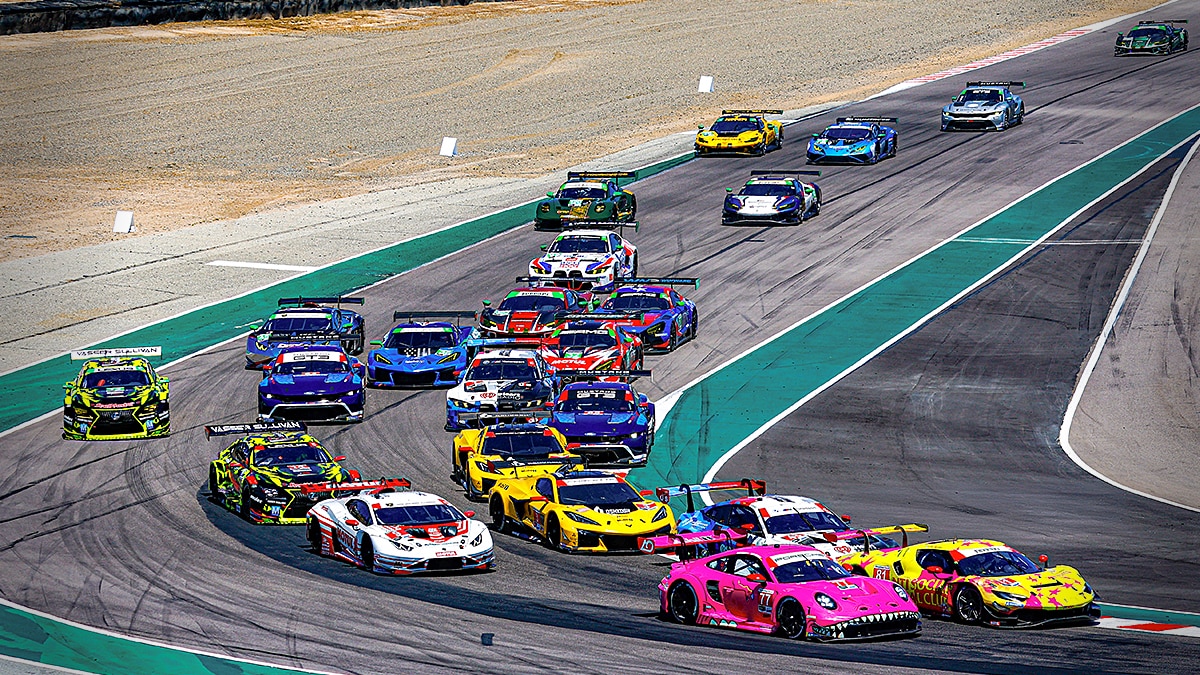
Combining telemetry and video data
Today, motorsports have high resolution cameras in all key locations and growing volumes of data streaming directly from cars. For IMSA, the amount of information is huge, particularly for the Rolex 24 AT Daytona, where 61 cars race for 24 hours, with several cars in the race completing nearly 3,000 miles each. IMSA realized it needed a more potent system to deliver better experiences for both race control Officials and fans. “Just over a year ago we were at the mercy of broadcast TV cameras to capture what we needed,” says Raffauf. “We had a long, tedious process to look at replays. It didn't give us an instantaneous understanding of an incident.”
IMSA turned to Catapult (formerly SBG Sports Software). “This system allows us to combine HD video with timing and scoring data, along with telemetry data we gather off the cars, and puts it in one timestamped package,” says David McSpadden, Senior Director of Systems Technology, IMSA. “On any given race weekend, we can have up to 72 distinct camera angles. This enables Race Control to have replay at their fingertips enriched with high fidelity data.”
Bosch delivered an AMD FPGA data-logging system integrated in-vehicle to keep growing volumes of vehicle information flowing freely. “We provide the scrutineering system to help ensure fair and consistent competition with reliable data, ensuring information is available in a timely manner from cars by processing the data on-site,” says Brooke Bond, Motorsports Operations Lead, Bosch. “AMD FPGAs are an important part of our digital core platform. They do the heavy lifting in almost all our Bosch Motorsport electronics. From displays to engine and hybrid control units, FPGAs operate time-critical logic to enable operation in real-time with shared functionality between components.”
Processing all this video and telemetry data in real time onsite requires high-performance infrastructure. “Once we had defined the specs for the system, we realized Lenovo servers and laptops powered by AMD CPUs would be the best option,” says McSpadden. “Catapult has demanding GPU and CPU requirements for client systems. On the front end for race control, we've deployed Lenovo laptops powered by AMD Ryzen CPUs. On the back end, the software suite is constantly saving video files to disk at around 700MB per second as well as all the telemetry and timing & scoring data to a MongoDB database on our servers. We rely on two Lenovo ThinkSystem SR645 V3 servers. One is the main system, and the other is a backup. On each of those, we have two VMware VMs powering half of the video channels each. They have 15TB solid state drives, 128GB of RAM, and are powered by AMD EPYC 7313 16-core processors.” These servers are installed in the IMSA Lenovo Technology Center Powered by AMD, housed inside a tractor-trailer that travels to each IMSA race.
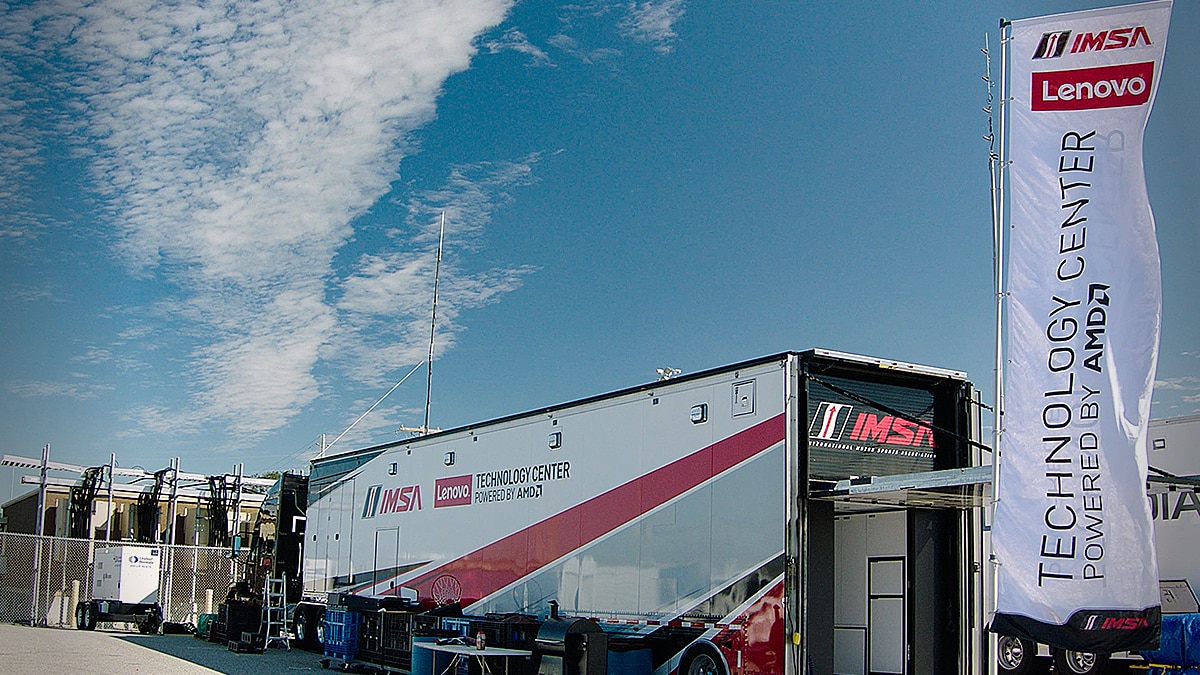
AMD technology enables rapid, reliable deployment
“We have a dozen laptops, all with AMD CPUs and GPUs,” says McSpadden. “Our users will have dozens of camera angles up all at once, analyzing what's happening in different locations around the circuit. One of the key early decisions that we made compared to some of the other racing series was to send multicast video everywhere over our network. This means five people can watch in race control, while others can watch in completely different locations like pit road or our scrutineering center.”
IMSA barely trialed the new setup before implementing it in a live environment. This could have been a recipe for disaster, but in this case, the deployment went smoothly. “We tested the system just once at Road Atlanta at the end of 2023 and moved to it the first race one event later at the beginning of 2024, which was a 24-hour competition at Daytona, the Rolex 24,” says Raffauf. “Out of the box, our AMD technology has been great.”
“We deal with really high-resolution data,” says Matthew Kurdock, Managing Director of Engineering, IMSA. “We're dealing with upwards of 400 data channels per car. Many of our channels are being logged at one millisecond, so we're creating very large volumes of information. Our Lenovo laptops with AMD CPUs deal with all this data flawlessly in real time during the race. We also put together performance reports that are generated as soon as the checkered flag drops.”
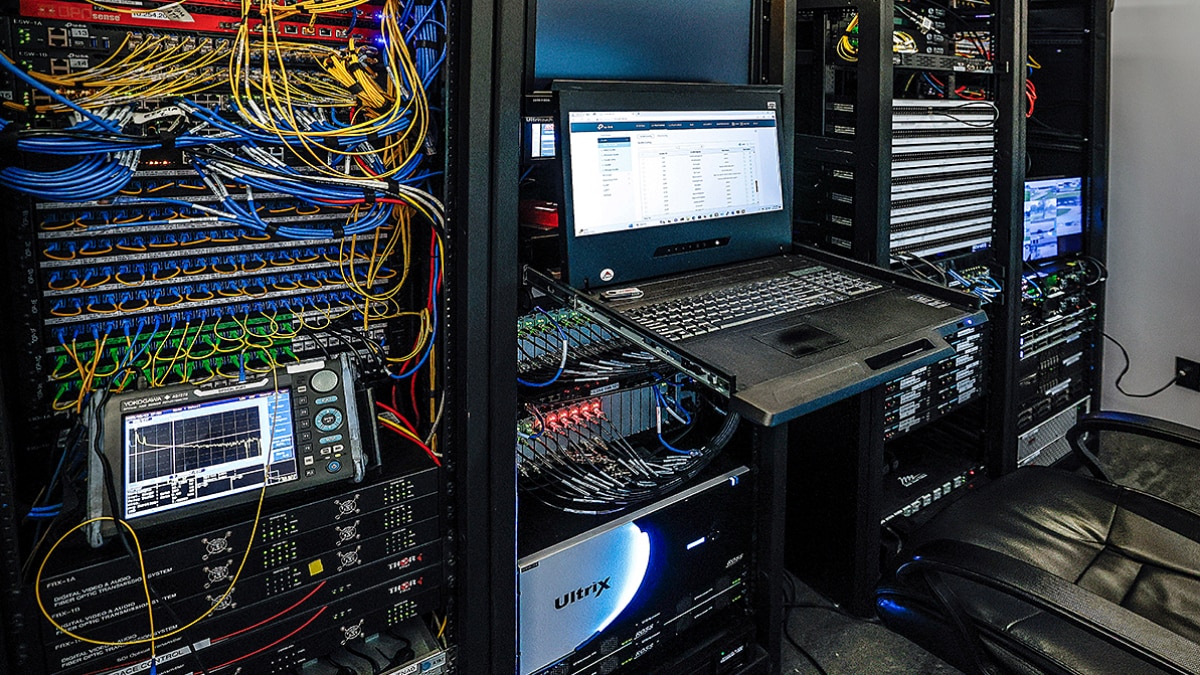
AMD technology delivers fan engagement, safer racing
“Just running the new system side by side with what we used to do at one event, we saw it was already superior,” says Raffauf. “It ran so well and just gets better because we are becoming more familiar with it. In race control alone, we can have five or six laptops watching different things at the same time, which is completely new for us. That capability allows safer, quicker, and more efficient decision-making in operating the event because we can have people looking at the pitlane, the technical issues, or following a car around the racetrack that has been damaged to see if that damage is deteriorating. All these things can be done simultaneously, which was never the case before.”
IMSA can now anticipate the severity of conditions of an accident from the data. “As soon as an incident with a car has occurred, we know what impact it has taken,” says Kurdock. “Before any of our safety and incident response personnel are on the ground, we know the extent of the accident. This enhances race safety. We can also integrate the telemetry coming off the car into the broadcast. You can now see basic information on throttle, braking, engine and vehicle speed, and how much energy remains in the tank on the car. This gives fans a better view of how the race strategy is going to play out.”
“We've got this data not only integrated into the race broadcast, but we also have a web page where fans can see a variety of live telemetry from the cars as they're racing,” says Kurdock. IMSA is also about to deploy Lenovo ThinkEdge SE455 V3 servers powered by AMD CPUs in its Mobile Data Center. These will host Microsoft Azure Local to replace VMWare.
“The main thing about AMD EPYC CPUs is their efficiency,” concludes McSpadden. “Our servers barely hit 60 percent utilization. Other organizations should follow what we've done. We’ve encouraged the software vendor to look at AMD EPYC CPUs as well. This was a huge step forward for us. Our system is a lot more stable with a lot less maintenance than others using Catapult. The list of cool stuff that we can do is never ending. There's going to be more camera angles. We're looking at doing some interesting things with telemetry and streaming to our fans. We’re really excited about the new opportunities working with AMD provides us.”

About the Customer
The International Motor Sports Association (IMSA) is the premier North American sports car racing sanctioning body, featuring participation by 18 global automobile manufacturers using racing to develop technologies for future street cars and mobility. Owned by NASCAR, its flagship series is the IMSA WeatherTech SportsCar Championship. This series features multi-class racing with advanced prototypes (GTP, LMP2) and production-based GT cars (GTD Pro, GTD). IMSA is renowned for its prestigious endurance races, including the Rolex 24 at Daytona, the Mobil 1 Twelve Hours of Sebring, and Motul Petit Le Mans. It sanctions multiple other series, serving as the pinnacle of sports car competition in North America. For more information visit IMSA.com.
Case Study Profile
- Industry:
Motorsport - Challenges:
Deliver the infrastructure performance required for next-generation motorsport telemetry data and video feeds for fans and race control officiating - Solution:
Deploy Lenovo ThinkSystem SR645 V3 servers powered by AMD EPYC™ 7313 processors alongside Lenovo ThinkPad Z16 laptops powered by AMD Ryzen™ CPUs - Results:
Support for up to 72 video feeds delivering up to 700MB/sec of data; up to 400 channels of telemetry data per car; race control can see dozens of different camera angles at once; engaging race data feeds for fans - AMD Technology at a Glance:
AMD EPYC™ CPUs
AMD Ryzen™ CPUs - Technology Partners:








